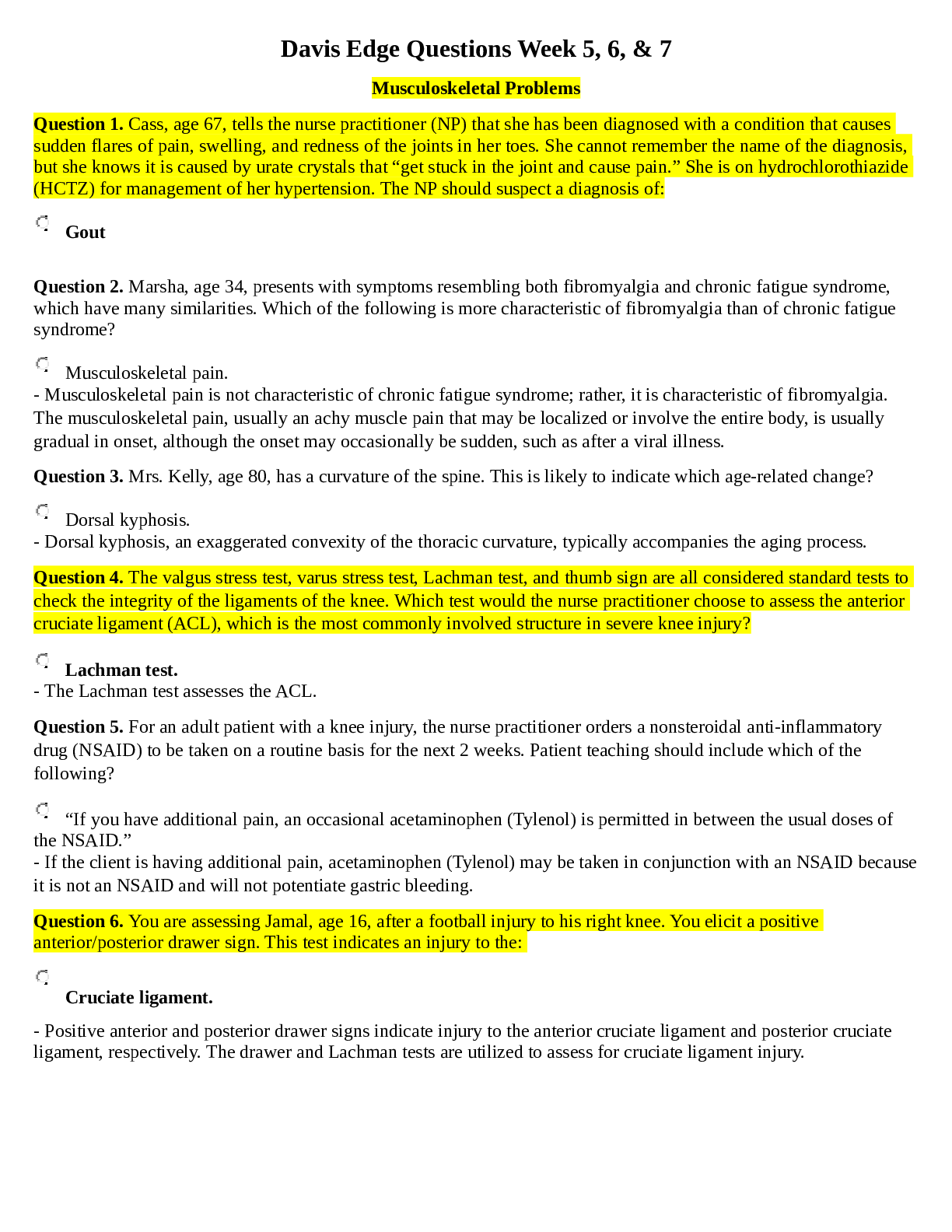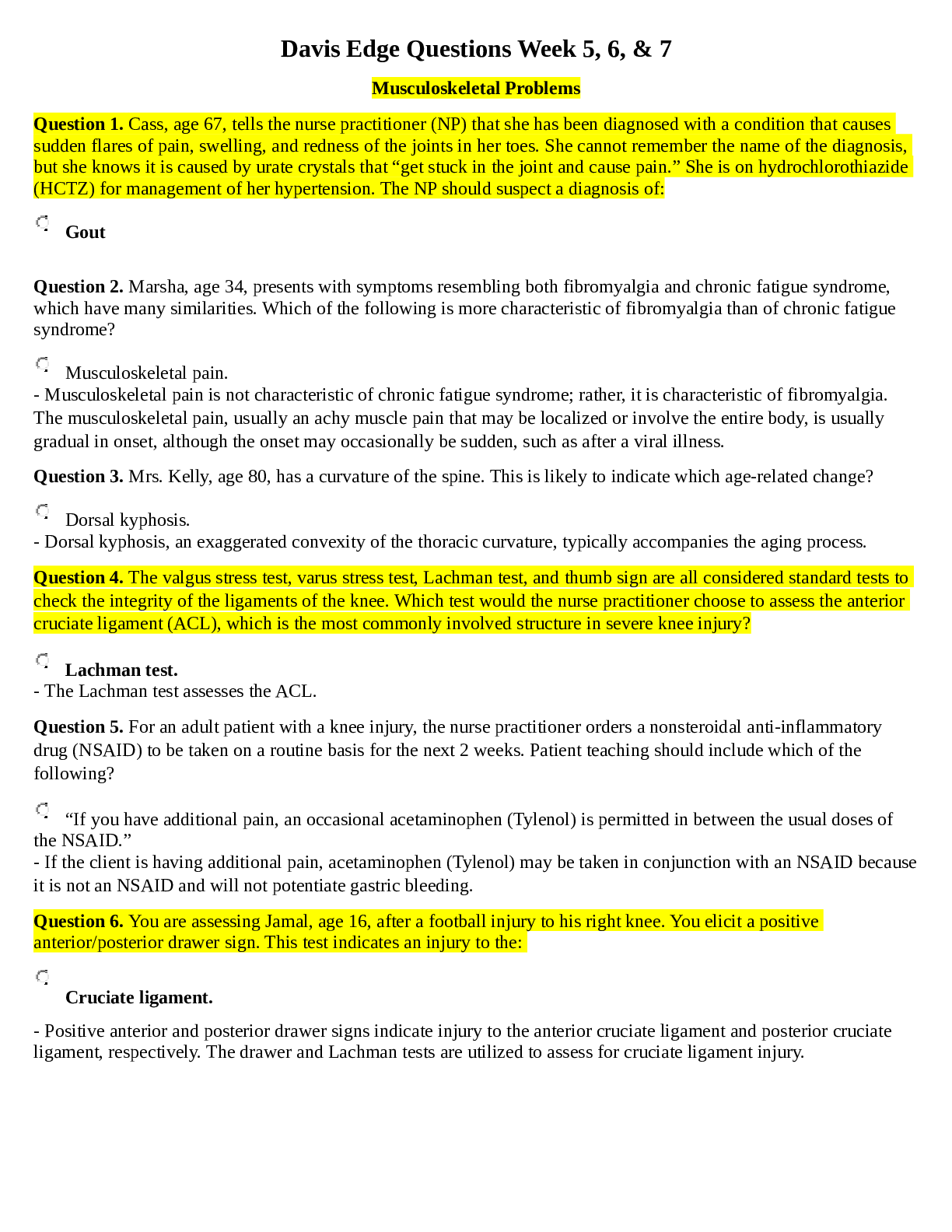Question 1. Cass, age 67, tells the nurse practitioner (NP) that she has been diagnosed with a condition that causes
sudden flares of pain, swelling, and redness of the joints in her toes. She cannot remember the name of the diagnosis,
but she knows it is caused by urate crystals that “get stuck in the joint and cause pain.” She is on hydrochlorothiazide
(HCTZ) for management of her hypertension. The NP should suspect a diagnosis of:
Gout
Question 2. Marsha, age 34, presents with symptoms resembling both fibromyalgia and chronic fatigue syndrome,
which have many similarities. Which of the following is more characteristic of fibromyalgia than of chronic fatigue
syndrome?
Musculoskeletal pain.
- Musculoskeletal pain is not characteristic of chronic fatigue syndrome; rather, it is characteristic of fibromyalgia.
The musculoskeletal pain, usually an achy muscle pain that may be localized or involve the entire body, is usually
gradual in onset, although the onset may occasionally be sudden, such as after a viral illness.
Question 3. Mrs. Kelly, age 80, has a curvature of the spine. This is likely to indicate which age-related change?
Dorsal kyphosis.
- Dorsal kyphosis, an exaggerated convexity of the thoracic curvature, typically accompanies the aging process.
Question 4. The valgus stress test, varus stress test, Lachman test, and thumb sign are all considered standard tests to
check the integrity of the ligaments of the knee. Which test would the nurse practitioner choose to assess the anterior
cruciate ligament (ACL), which is the most commonly involved structure in severe knee injury?
Lachman test.
- The Lachman test assesses the ACL.
Question 5. For an adult patient with a knee injury, the nurse practitioner orders a nonsteroidal anti-inflammatory
drug (NSAID) to be taken on a routine basis for the next 2 weeks. Patient teaching should include which of the
following?
“If you have additional pain, an occasional acetaminophen (Tylenol) is permitted in between the usual doses of
the NSAID.”
- If the client is having additional pain, acetaminophen (Tylenol) may be taken in conjunction with an NSAID because
it is not an NSAID and will not potentiate gastric bleeding.
Question 6. You are assessing Jamal, age 16, after a football injury to his right knee. You elicit a positive
anterior/posterior drawer sign. This test indicates an injury to the:
Cruciate ligament.
- Positive anterior and posterior drawer signs indicate injury to the anterior cruciate ligament and posterior cruciate
ligament, respectively. The drawer and Lachman tests are utilized to assess for cruciate ligament injury.
Read More


